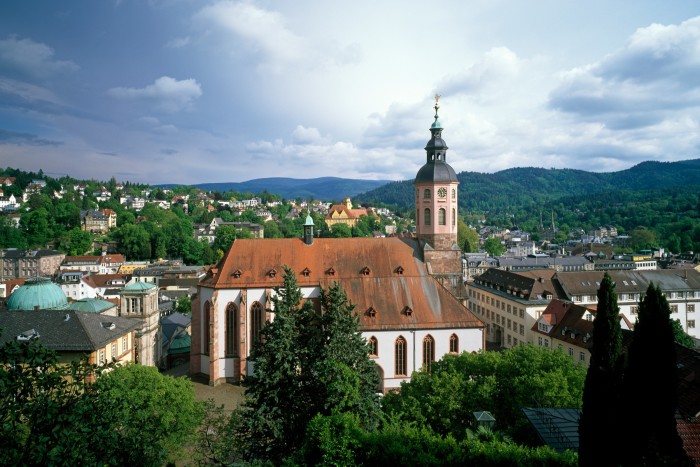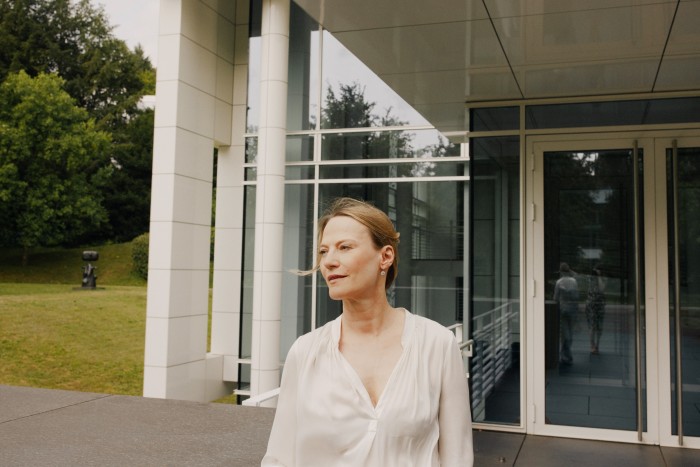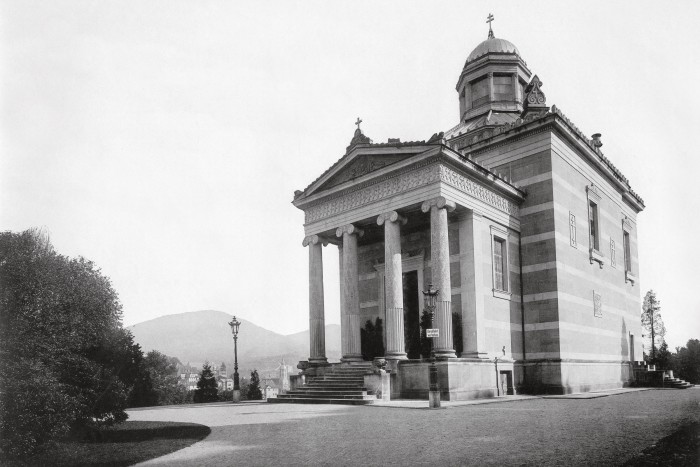An insider’s guide to Baden-Baden

Roula Khalaf, Editor of the FT, selects her favourite stories in this weekly newsletter.
I grew up in Baden-Baden and still consider it home, though I now live in London. My mother lives here and I return often. A short drive from the airport and you’re in this gorgeous part of the Black Forest, nestled in hills full of fir and evergreen trees. Baden-Baden – which is named for its famous thermal springs – has four proper seasons. Spring brings apple and cherry blossoms and carpets of crocuses that are out of this world; rhododendrons bloom in summer; and autumn is vibrant and magical. Exotic trees gifted by foreign dignitaries in the past line the Oos River and change colour throughout the year.
The town caters to spa-goers, so there are lots of accommodation options but my recommendation is the grand Brenners Park-Hotel, a belle époque treasure that’s set in the middle of a private park. It has its own private gardens and terrace. Another draw is Villa Stéphanie next door, the hotel’s spa annexe that has just 15 rooms, though it is a wonderful day spa as well.

One of the best places for soaking in the mineral waters is Friedrichsbad, an iconic spa that was built in the 19th century in Renaissance style and still draws people for its incredible mix of baths. There are dry and wet rooms with steam at varying temperatures, warm bubble baths and cold plunge pools, all in a beautiful tiled setting. I love the three-hour soapy scrub followed by a rest in a quiet zone, which is very relaxing and can open your eyes to how tired you have been. Be prepared for it to be all-nude.


Food plays a central role here throughout the year. In summer, the fields are full of white asparagus, and the cherry and plum trees provide the fruit for our favourite cakes and jams. There are so many regional producers of meats, hams, jams and sourdough. One of the best places to find them all in one place is Geroldsauer Mühle: I like to buy their warm potato salads and also maultaschen, a German version of ravioli stuffed with meat or vegetables. One of the best restaurants here, to my mind, is Filios, a high-end, modern Greek place that serves lamb that’s been slow-cooked for 12 hours. I also like Maltes Hidden Kitchen, which is a casual coffee shop by day and transforms into a Michelin-starred restaurant at night. In the old town you’ll find Baldreit, a local institution that serves typical Badisch cuisine in a charming courtyard, and I love Capri for a coffee or an ice cream. It has been there since 1966 and is the place to watch the world pass by.


I like the small private museums here, such as the Richard Meier-designed Frieder Burda. The collection includes work by Gerhard Richter, Anselm Kiefer and Willem de Kooning, and also features outstanding programming focused on digital art and AI. The adjacent Kunsthalle is where I first saw work by Donald Judd in the 1980s and it spurred my love of art and history.
For shopping, most of it comes back to the food. Konditorei such as Café König are famous for their chocolates and cakes, while the Christmas market is considered by many to be the most gorgeous one in Germany. You’ll also find some niche boutiques that focus on a particular small luxury, such as Olivier Maugé for millinery. Maugé works on a small collection of occasion hats every year, the kind you might wear to the local horse races, Die Grosse Woche in Iffezheim, or the perfect straw hat for the beach. And Strasse Books is a family-run bookshop and a real source of knowledge.


There is of course a huge focus on the outdoors – and especially hiking. The Panorama Trail runs in and around the city, divided into sections of nine to 15km each. It was recently voted “Germany’s most beautiful hike” for good reason; the views of lakes, waterfalls and architectural wonders are incredible. My favourite part of the trail is the walk up to the Stourdza Chapel, close to giant redwoods and sequoias.
Baden-Baden is a Unesco World Heritage Site so I’m confident that it will stay protected. There’s also a sort of natural protection from the surrounding thick forests. The area has kept its identity; you can still get a coffee at Capri and the hotels and restaurants that have been run by generations of families have stayed. The only thing that has changed is the world-famous Casino Baden-Baden; traditionally, locals weren’t allowed in to prevent them from losing money, but now we can play roulette like everyone else.
Comments